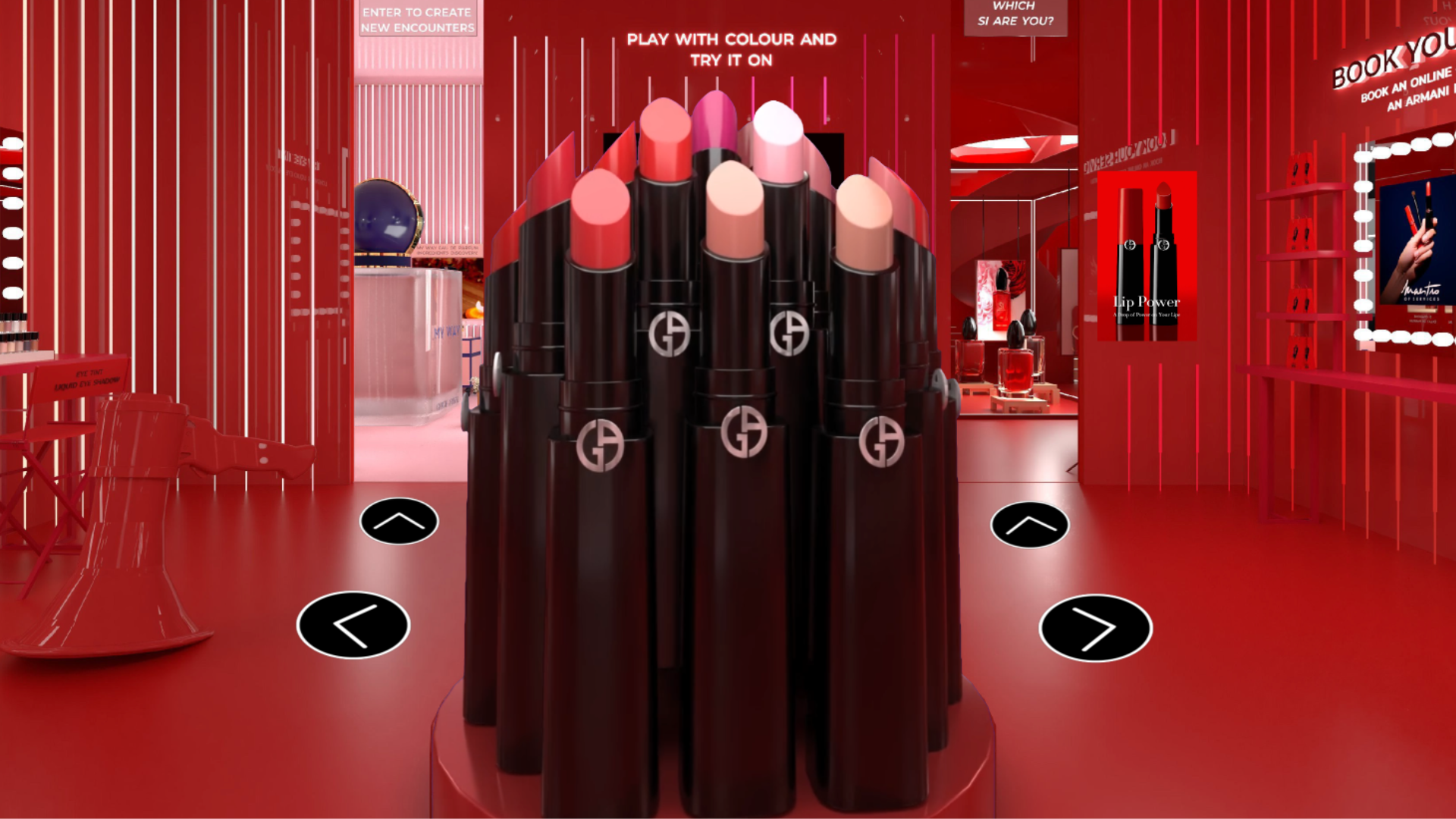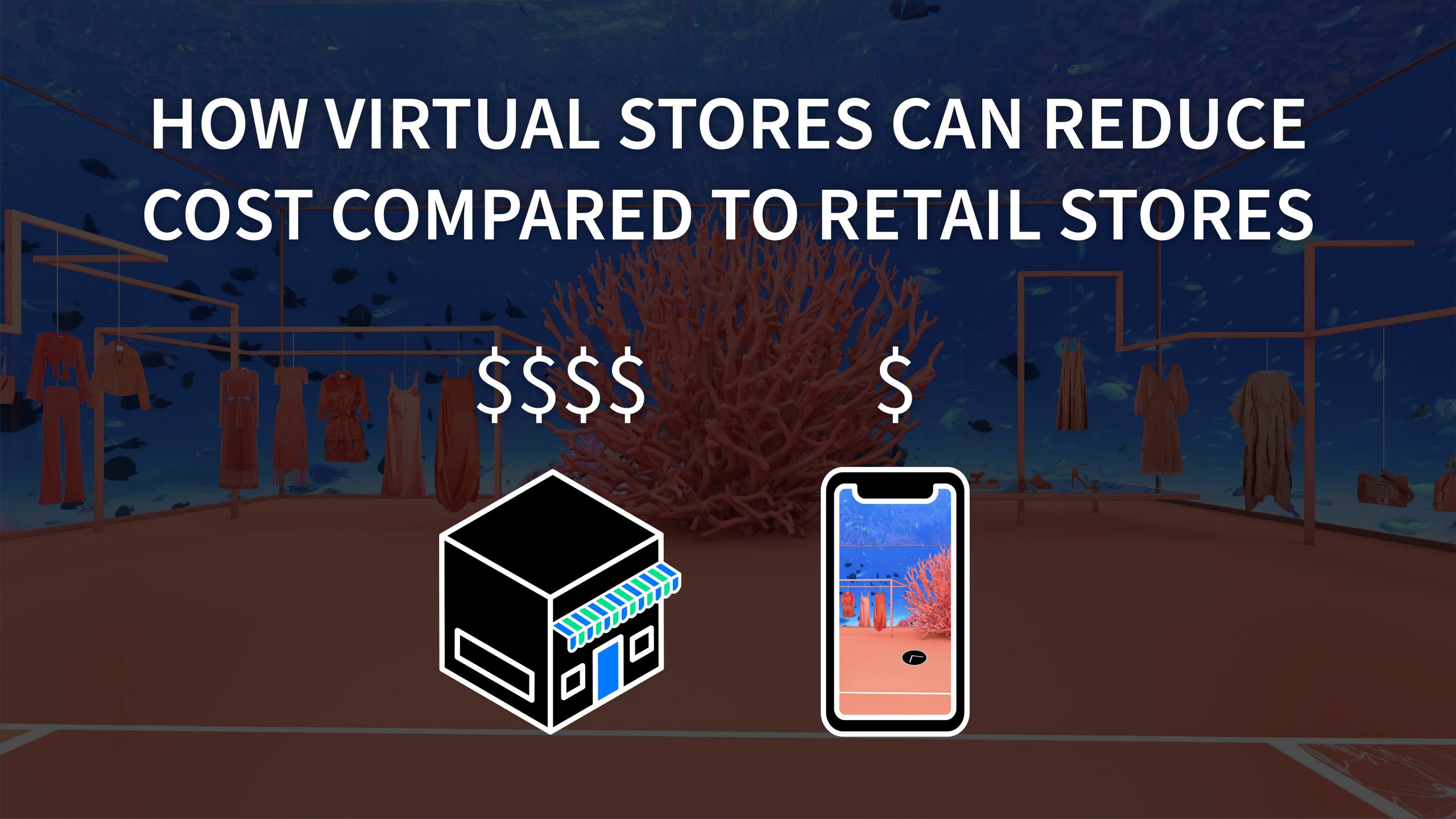As budgeting season approaches, brands and retailers have to figure out the most optimal way to allocate their funds – especially with the current state of the economy. There are a wide variety of marketing solutions at a retailers’ disposal but some are more cost-efficient than others, such as virtual stores when compared to physical stores.
Virtual stores offer an immersive and discovery-driven experience that can provide high engagement at a lower cost compared to traditional brick-and-mortar stores; they’re able to mimic the experience of in-store shopping without the full costs of operating a storefront. In this blog, we will highlight the top 4 reasons virtual stores offer a more cost-effective retail strategy compared to retail stores.
1.) Lower Opening Costs
Physical retail stores are high cost and high effort. The average cost of opening a retail store in a prime location such as New York City can be over $2M. This is, on average, 6X the amount it would cost to open a virtual store. The $2M price tag includes typical costs such as necessary permits and operating licenses, security deposits, interior designer fees, furniture and store fixtures, and the marketing expenses associated with launch. Virtual stores don’t have the same expenses and can therefore launch at a fraction of the cost.
The calculated cost of a physical store also only represents the opening cost for a single location. For major retail brands it is necessary to open multiple brick-and-mortar locations around the world, but this is extremely costly. The internationalization of virtual stores allows a single store rendition to be translated and used anywhere around the world, complete with different currencies.
2.) Shorter Go-To-Market Time
Perfectly conceptualizing, curating, and establishing a brick-and-mortar store for launch is a time-consuming and tedious endeavor. Between finding a retail space, developing the aesthetic, constructing a store layout, sourcing materials, hiring staff, and coordinating the store launch, a lot needs to happen before doors open. Virtual stores take a quarter of the time to launch than physical retail stores. The Obsess team works with your creative team to conceptualize and design a custom virtual store. You will have a dedicated team to collaborate with your internal team on 3D designing/photographing, UI designing, implementing content, engineering, and UX testing to bring your vision to life in a timely manner. Rather than taking 12 months for a retail store, virtual stores typically take 2-3 months from start to finish.
When it comes to launching pop-up stores, a quick turnaround time is extremely important. Obsess, the leading Virtual Store Platform, has worked with a wide variety of brands that have launched virtual pop-up stores in a short time frame. For example, Crocs launched a fully 3D-rendered experience complete with a unique variety of content extras and an avatar of the rap superstar Saweetie to promote their new line of shoe charms. The metaverse store experience “has driven double-digit engagement rates across social media platforms, outperforming digital benchmarks” according to Crocs’ CMO Heidi Cooley.

3.) Lower Operating Costs
The average price per square foot to rent a retail space in New York City is around $2,775. For a 2,000 square foot store, this ends up being around $5,550,000. When taking into account all operating costs such as salaries for labor, utilities, maintenance, and insurance, operating a physical retail store in NYC can cost around $6M annually.
Virtual stores provide a highly engaging, discovery-driven shopping experience at a fraction of the cost of a brick-and-mortar store. Retailers are able to satisfy consumer demand for experience without having to pay the additional operating costs associated with maintaining physical retail stores – there is no need to pay utilities, maintenance, or insurance, driving operating costs for a virtual store down to your Obsess subscription. This typically ends up being around $250,000 per year.
4.) Higher Audience Reach
Virtual stores are not limited by store hours and are accessible worldwide at any time; consumers are able to experience a store without having to go to the physical location. The increased accessibility enables retailers to reach a significantly larger audience than the foot traffic a singular brick-and-mortar store would allow. Brands are able to capitalize on the wide reach of virtual stores, capturing and engaging new consumers across the globe without having to establish a physical presence in international markets.
For example, Armani Beauty launched a virtual store in tandem with their pop-up concept in the UK’s Piccadilly Circus to promote various products such as makeup and the brand’s Sì fragrance. Without having to fly to London, users can experience a virtual rendition of the pop-up complete with interactive entertainment options, the ability to book appointments with beauty consultants, a billboard display of Cate Blanchett (the fragrance’s spokesperson), AR technology that allows users to try on products, and a 360-degree virtual exterior of Piccadilly Circus.

Not only are virtual stores a more innovative, immersive, and discovery-driven form of e-commerce, they are also a low-cost, high performing platform. This platform performs especially well with the younger generations. These younger audiences are more familiar with the interface, via gaming, and are less likely to shop in physical locations; adhering to their behaviors and preferences is necessary to stay relevant. Virtual stores are the perfect solution to cutting costs in your retail strategy, while staying relevant in an evolving retail market. Get more details of the comparison in the infographic “How Virtual Stores Can Reduce Cost Compared to Retail Stores” here.
Obsess has partnered with the biggest brands in a wide variety of industries to create over 150 virtual stores. To learn more about how Obsess can help you build your virtual flagship store, send us an email at contact@obsessVR.com.










